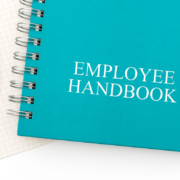With Benefits Costs Likely to Rise, Employers May Want to Consider HSAs
- Employers anticipate health benefits costs to increase by an average of 5.4% next year.
- Learn about Health Savings Accounts (HSAs) and high-deductible health plans.
- Understand HSA requirements for employers.
- Learn HSA annual contribution requirements.
It will likely come as no surprise that the cost of healthcare benefits for employers is expected to rise in 2024. Inflation, though not out of control, remains a persistent problem. Many industries continue to face shortages of skilled labor — meaning organizations must offer higher cost benefits to compete for talent.
Preliminary results from a 2023 study, National Survey of Employer-Sponsored Health Plans, drive home the point. The study, conducted by Mercer consulting firm, gathered data from 1,700 public and private employers. They found that respondents expect health benefits costs to increase by an average of 5.4% next year.
There may be various incremental ways for your organization to cut its benefits costs. One popular approach is to offer Health Savings Accounts (HSAs) coupled with, as required by law, a high-deductible health plan (HDHP).
Employee-Owned Accounts
HSAs operate somewhat like Flexible Spending Accounts (FSAs), which employers can also offer to eligible employees. HSAs and FSAs permit eligible employees to defer a pre-tax portion of their pay to later use to reimburse out-of-pocket medical expenses. However, unlike FSAs, HSAs are employee-owned accounts. This means unused funds in a HSA can be carried over from one year to the next indefinitely.
The most significant requirement for offering employees HSAs is that, as mentioned, you must also cover them under an HDHP. For 2024, each participant’s health insurance coverage must come with at least a $1,600 deductible for single coverage or $3,200 for family coverage. It’s okay if the HDHP doesn’t impose any deductible for preventive care, such as annual checkups. Additionally, participants can’t be eligible for Medicare benefits or be claimed as a dependent on another person’s tax return.

Contribution Limits
The benefit of the high deductible requirement is that premiums for HDHPs are typically less expensive than for health plans with lower deductibles. You and your employees can use some or all the savings on premiums to fund their HSAs.
Speaking of which, together, your organization and each participant can make pre-tax HSA contributions in 2024 of up to $4,150 for single coverage or $8,300 for family coverage. An account beneficiary who is aged 55 or older by the end of the tax year for which HSA contributions are made may contribute an additional $1,000.
A couple of advantageous points for employers:
- Contributions are optional, and
- pre-tax contributions to an employee’s HSA, whether by you or the participant, are exempt from Social Security, Medicare, and unemployment taxes.
A Popular Combo
Combining an HDHP with HSAs can help cut benefits costs by lowering premiums and providing tax savings. It also gives participants an account that can grow in value over time, a feature many job seekers may appreciate. Of course, all these advantages don’t automatically make HSAs the right choice for every employer.
Call Fiducial at 1-866-FIDUCIAL or request an appointment at one of our office locations to discuss the concept further or for other ideas about better managing the costs of employee benefits.
Ready to request an appointment now? Click here to request an appointment with a Fiducial Advisor. Know someone who might need our services? We love referrals!









